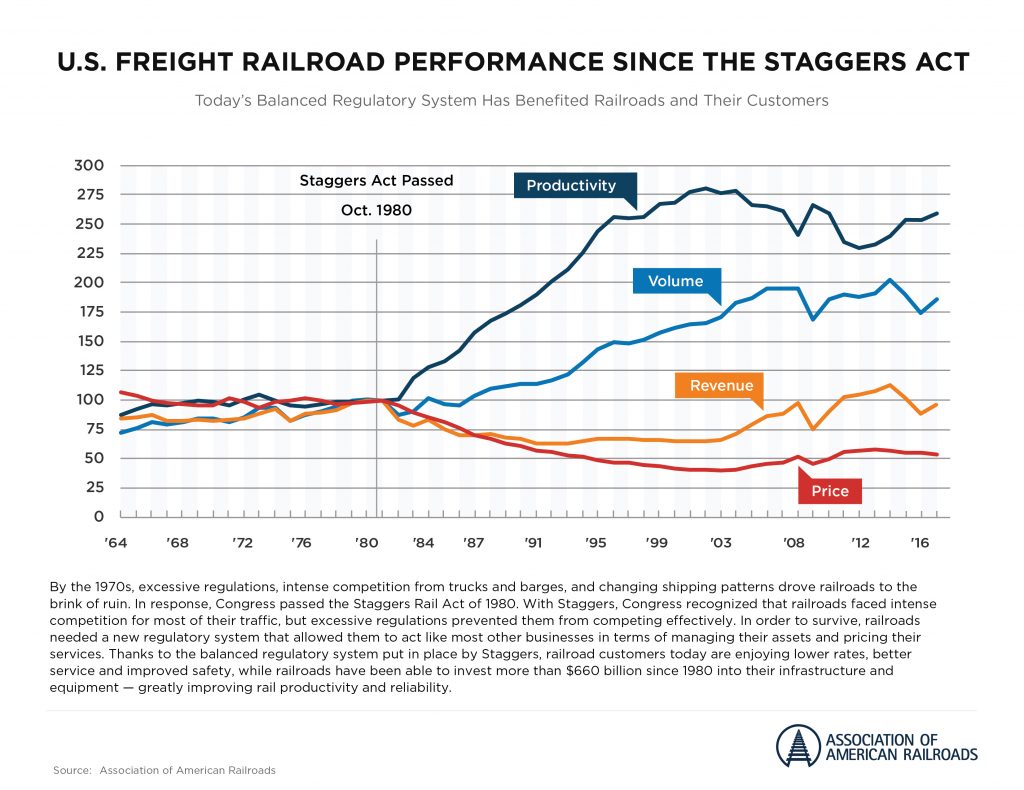Washington, DC — A little-know government regulator could bring sweeping changes for the freight rail industry—changes that undermine the efficient nationwide rail network relied on by consumers and businesses in communities across America. Here’s a breakdown of what’s happening, what’s at stake, and what you can do to get involved.
Rail re-regulation proposals march forward: Rail’s economic regulator—the U.S. Surface Transportation Board (STB)—is considering several new rules that could hurt the long-term health and efficiency of the nationwide rail network and the communities and businesses that rely on it.
Remind me, what’s being proposed and why? A few things. One rule would compel railroads to turn over their traffic to competitors. Another would re-regulate entire categories of commodities. Perhaps the most dramatic proposal would effectively enable government caps on the rates railroads can charge customers. The why is less complicated: several large companies that ship by rail are pushing the STB to change regulations to favor them.
The stakes: An upset to the regulatory balance could have the opposite of its intended effect, according to both railroads and economists. Government-mandated rate caps, for example, could prevent rail carriers from earning what it takes to run a railroad. Infrastructure is expensive (think billions annually) and an endeavor that requires constant spending. The nation’s businesses and economy would suffer if rail service degrades because railroads can’t invest.

The times, they are changing: The future of transportation, from just-in-time delivery and e-commerce to growth in international trade, is quickly changing the landscape across America’s transportation modes. That means rail’s competitive environment is as tight as ever, especially as a softening economy and trade tensions have weakened all freight traffic in 2019.
Lessons from the past: An architect of today’s current regulatory framework, which ushered in a freight rail renaissance, explains why it works: “The fundamental achievement of partial deregulation was that it brought market-based principles to an industry forced into severe inefficiencies by a century of man-made regulations.”
The bottom line: “Instead of simply playing Whack a Mole, STB should consider how the industry is evolving,” writes Dr. William Huneke, former director and chief economist at the STB, noting that railroads are transitioning into “a riskier and more uncertain future.” STB regulators should recognize that a return to overregulation would undercut rail’s ability to innovate, serve customers and meet the demands of tomorrow’s economy.
Next steps—what can I do? The STB will hold a hearing on Thursday, December 12 to consider one of these proposed rule changes. For GoRail’s part, we ask that you help spread the word by sharing our grassroots Action Center on social media.


